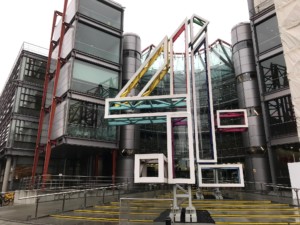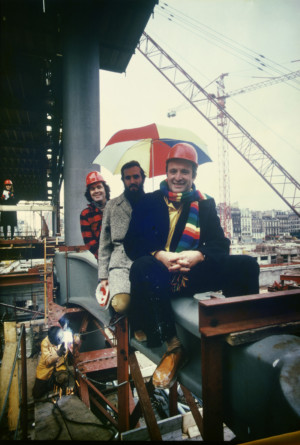On October 5, the New York Landmarks Preservation Foundation hosted its annual Lunch at a Landmark at a historic building in midtown Manhattan. As always, the event was well attended by prominent architects, preservationists, and designers, as well as experts, supporters, and enthusiasts of those fields. New Yorker staff writer Adam Gopnik introduced Lord Richard Rogers warmly—so much so that when Rogers took the microphone, he joked that “we should all just go home now.” Gopnik focused on Rogers’s approach to human-centric design, saying, “The core idea of liberal humanism is not that man is the measure of all things, but that all things can be measured by man and by woman.” This focus was in conjunction with Rogers’ new book A Place for all People, which further explains the architect’s approach to modernism, civic value, and urban design.
Modernism is a funny word, artistically and architecturally speaking. Once the modernists dubbed themselves as such, either in a stroke of hubris or marketing genius, the rest of us were stuck with postmodernism, and even post-postmodernism. In his talk at “Lunch at a Landmark,” Rogers reframed the word, explaining: “Modernism is good architecture of its time, advanced by technology, by changes in economics, and by changes in sociology. What is happening at that time? What is the zeitgeist?” He proceeded to walk through a brief timeline of architectural works, from the primitive hut and Brunelleschi’s dome, to Palazzo Vecchio in Florence, Italy, and Piazza San Marco in Venice, citing the different styles and renovations along the way. Through these examples he identified two types of architecture: “Architecture that is challenging, that is different, and architecture that just disappears within its current state,” Rogers said. “I’m not saying one is better than the other, but it is important to concede the two differences.” In particular, he focused on the five main iconic buildings in the Piazza San Marco, highlighting how the Renaissance elements set off Medievalism and how each building relates to the others, despite the many elements at play.
In his own work, he initially found some difficultly relating architecture to its surroundings. When designing the Lloyd’s building and thinking about how it would fit in with its neighbors, Rogers was concerned. “Fifty percent of the City of London has been rebuilt in the last forty years, so what am I meant to be relating to? How do you relate to the existing conditions when you are aware that they might not be there in a few years’ time? And you mourn the fact that the buildings do not fit their purpose for any length of time—it’s about sustainability, it’s about energy, and it’s about waste of energy. One of our goals was to make the Lloyd’s building last into the next century (which we accomplished). We wanted a building that could change, that could adapt—a big flexible space. When we started designing Lloyds the height of technology was the Xerox machine. We have to interpret, or try to interpret the conflict of continuous change.”
He faced a similar quandary with the Centre Georges Pompidou he did with Renzo Piano, which partially informed the building’s open layout, external structure, and the revered piazza that Rogers described as “a cross between Times Square in the 1970s and the British Museum…. A place for people, a place for all people.” Now, it is undergoing renovations to update the HVAC systems and such, but still remains a relevant structure.
Rogers touched on other projects as well, from Las Arenas in Barcelona to Three World Trade Center in New York. He concluded by good-naturedly hoping that at the very least, it won’t earn a moniker of ‘cheese grater,’ like the Leadenhall. “Londoners are very creative with their nicknames,” he quipped. He doesn’t take it too personally though, as this is just one of many jabs at modernism endured by all top architects. “Prince Charles once said the Luftwaffe did less damage than I did…. He might be right.” We have a hunch that Rogers won’t let the royal architecture criticism affect him, or his modern buildings, too much.










